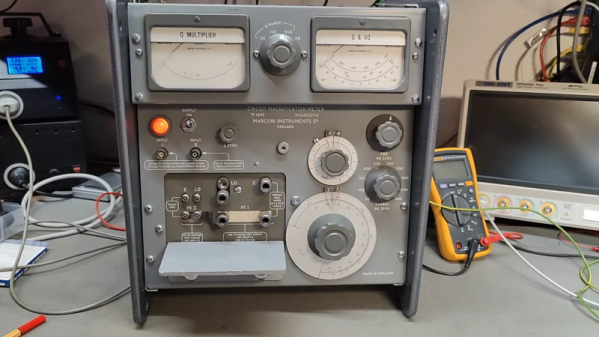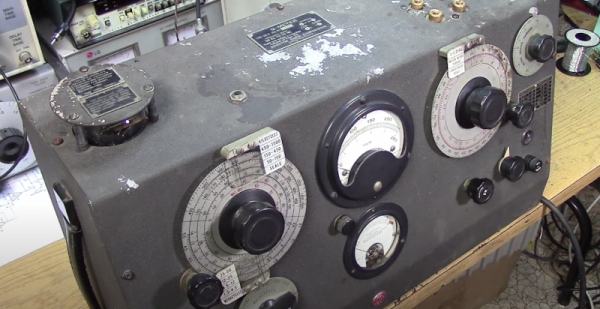Although it sounds like some Star Trek McGuffin, a Q-Meter is a piece of test gear that measures the Q factor of a tuned circuit. [Thomas] got a Boonton meter from 1962 that wasn’t in very good shape, but it was a fun teardown, as you can see in the video below. The meter had signs of a prior modification or repair, but still a nice peek into some vintage gear.
The meter could measure up to 260 MHz (or megacycles in 1962 parlance) and had some unusual features, including an oddly wired AC transformer and a “voltage stabilizer” to ensure a constant AC voltage at the input. We have to admit, we miss the days when our test equipment had gears inside. Then again, we don’t miss the tubes and the high-voltage stuff. Because of the high frequency, the unit even has an oddball acorn tube that you rarely see.
You may notice the meter has a mirror in a strip on the face. This is a common feature of high-precision analog meter movements. The idea is that you move your head until the needle hides its own reflection in the mirror to avoid parallax errors in your reading.
This isn’t the first Q meter we’ve seen; in fact, one was pretty similar but a bit older. While you can get a lot of new gear cheap these days, there’s still something to be said for vintage test equipment.














